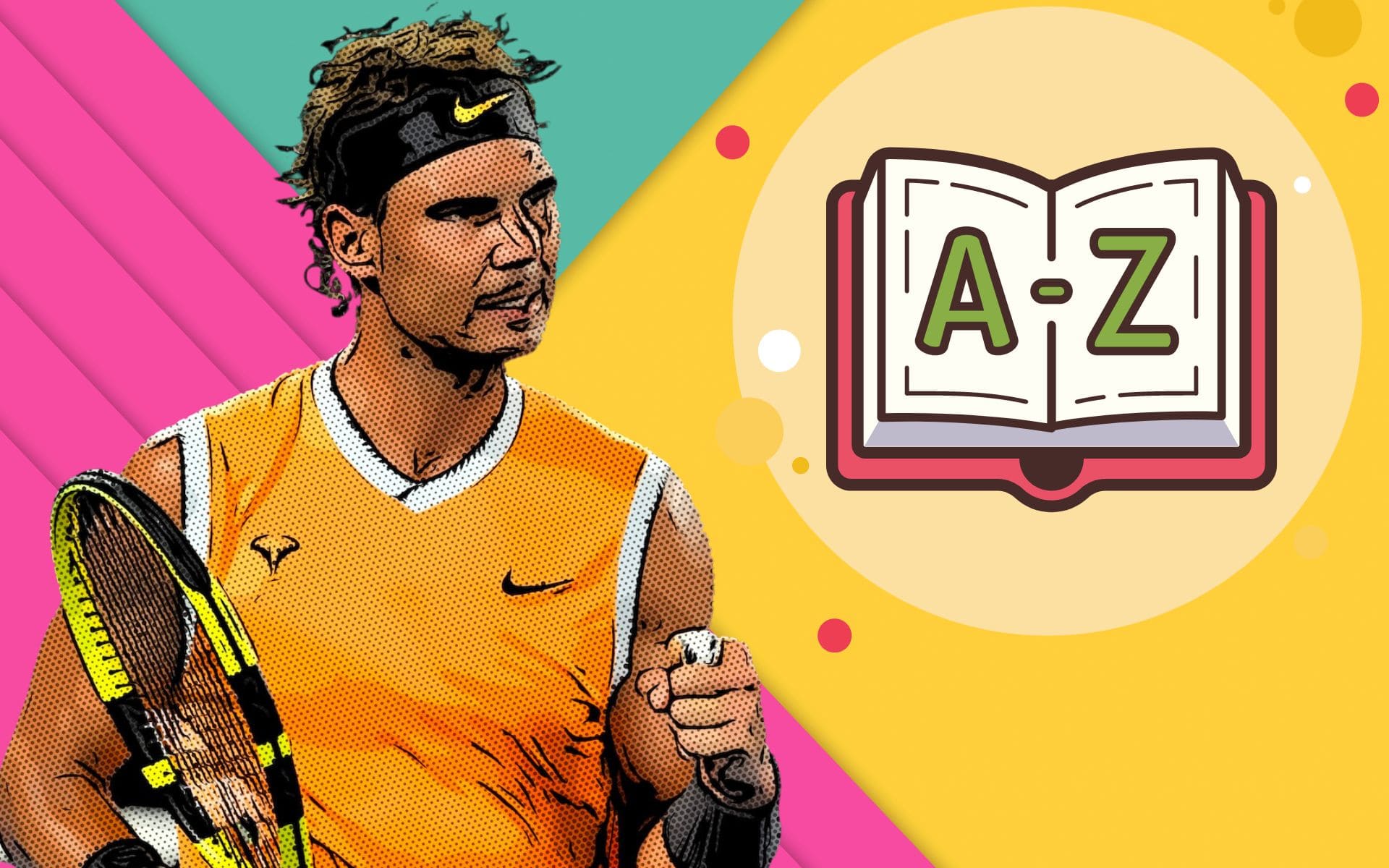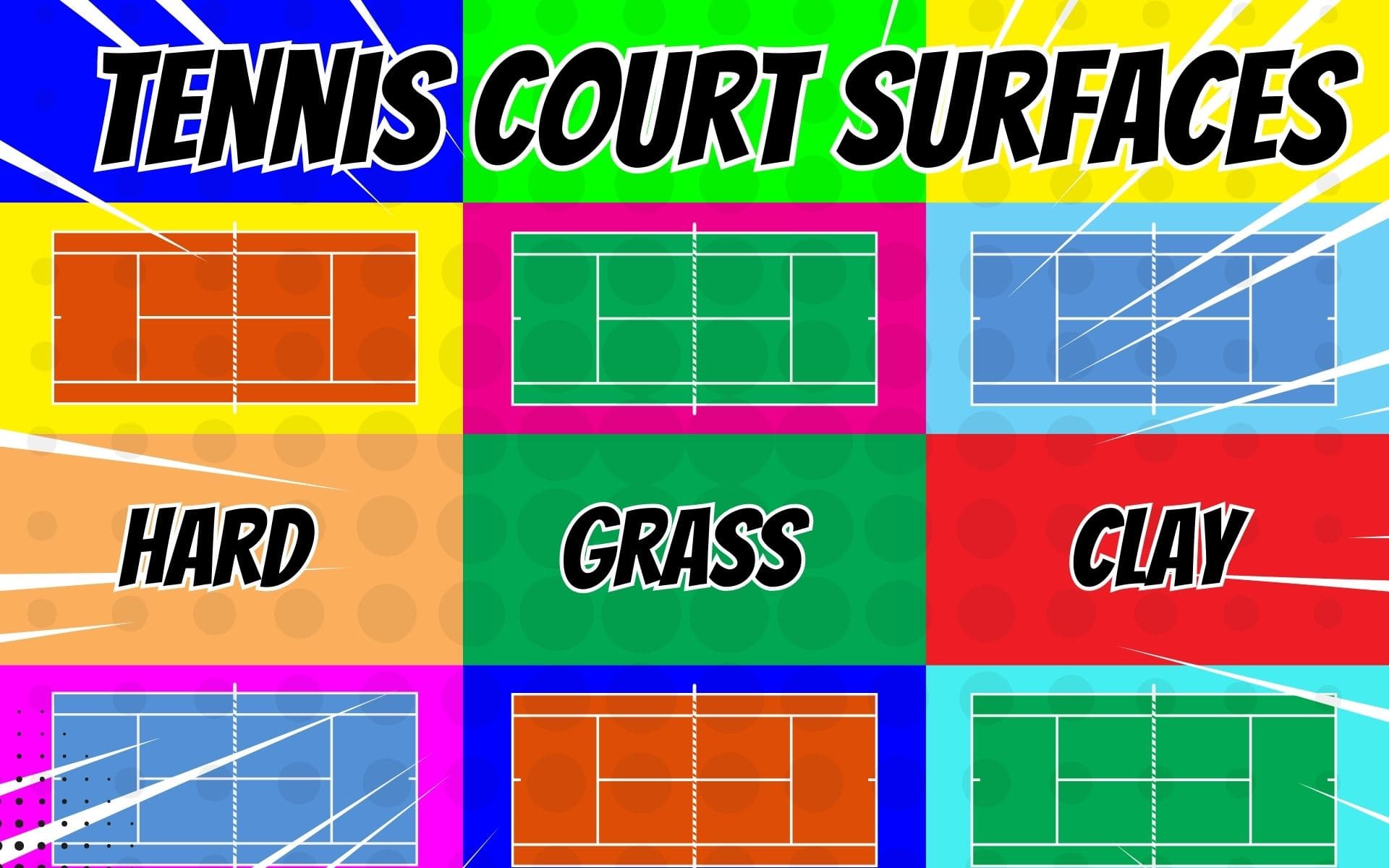From essential terminology to slang expressions and technical jargon, our glossary covers a wide range of tennis-related terms that you may encounter on and off the court.
You’ll find definitions for fundamental concepts, scoring systems, playing styles, equipment, and more, as well as explanations for various tactics and strategies employed by players at all levels of the sport.
| Term | Definition |
|---|---|
| Ace | A serve that wins a point outright without the opponent being able to touch the ball with their racket. |
| Ad Court | The left side of the court for each player when facing the net, where the advantage (ad) point is played in a deuce situation. |
| Advantage | The point scored immediately after deuce, indicating that the player who wins the next point will win the game. |
| All-Court Player | A player who is comfortable and skilled in playing from all areas of the court, including the baseline, mid-court, and net. |
| Alley | The area between the singles sideline and the doubles sideline, used only in doubles play. |
| Approach Shot | A shot hit by a player as they move toward the net, typically aimed deep into the opponent’s court or to a difficult-to-reach location, in order to set up a winning volley or put pressure on the opponent. |
| Backhand | A stroke where the player hits the ball with the back of their dominant hand facing the ball. This can be executed with one or two hands on the racket handle. |
| Bagel | A slang term used to describe a set in which a player wins all six games (6-0). |
| Baseline | The line at the back of the court that marks the boundary for play. |
| Baseline Player | A player who primarily plays from the baseline, relying on groundstrokes and consistent play to win points. |
| Best-of-Five | A match format in which the first player to win three sets wins the match. This format is used in men’s singles matches at Grand Slam tournaments and Davis Cup ties. |
| Best-of-Three | A match format in which the first player to win two sets wins the match. This format is used in most professional tennis matches, including women’s singles matches at Grand Slam tournaments and both men’s and women’s singles at the Olympics. |
| Breadstick | A slang term used to describe a set in which a player wins six games to one (6-1). |
| Break Point | A situation where the receiving player can win the game by winning the next point, thus “breaking” the server’s serve. |
| Buggy Whip | A type of forehand shot where the player’s follow-through ends up high and around their non-dominant side, resembling the motion of cracking a whip. This shot generates topspin and is often used to counter high-bouncing balls. |
| Canadian Doubles | A variation of doubles tennis where one player competes against a doubles team. The single player is allowed to use the entire court, while the doubles team is restricted to the standard doubles court. |
| Challenger Tournament | A tier of professional tennis tournaments below the ATP Tour and WTA Tour level, offering lower prize money and fewer ranking points, typically played by lower-ranked players or those working their way back from injury. |
| Changeover | The time between the end of an odd-numbered game and the start of the next game, when players switch sides of the court. |
| Chip and Charge | A tactic where a player hits a low, sliced shot (chip) and follows it up by moving forward to the net (charge) to apply pressure on the opponent. |
| Closed Stance | A stance where a player’s back foot is closer to the net than their front foot when hitting a shot, commonly used for groundstrokes. |
| Continental Grip | A versatile grip where the base knuckle of the index finger and the heel of the hand rest on the third bevel of the racket handle. Often used for serves, volleys, and slice backhands. |
| Counterpuncher | A defensive player who relies on consistency, speed, and placement to return their opponent’s shots, often aiming to force errors or create opportunities for counter-attacks. |
| Crosscourt | A shot hit diagonally from one side of the court to the other. |
| Dead Ball | A ball that has lost its bounce, typically due to wear or damage. |
| Dead Net Cord | A shot that hits the net cord and then drops dead on the opponent’s side of the court, making it difficult or impossible to return. |
| Deuce | The score of 40-40 in a game, requiring a player to win two consecutive points to secure the game. |
| Deuce Court | The right half of the court, from where the server serves when the game score is deuce or when the sum of the points played in the game is even. |
| Double Fault | Two consecutive service faults by the server, resulting in the loss of the point. |
| Down the Line | A shot hit straight along the sideline, parallel to the net. |
| Drop Shot | A softly hit shot that barely clears the net and drops sharply, aimed to catch the opponent off-guard and force them to move quickly towards the net. |
| Eastern Grip | A grip where the base knuckle of the index finger and the heel of the hand rest on the third bevel of the racket handle for forehands, and on the first bevel for one-handed backhands. Commonly used for flatter shots. |
| Fault | An unsuccessful serve that does not land within the service box on the opposite side of the court. |
| Flat Shot | A shot hit with little to no spin, resulting in a straight trajectory and faster pace. |
| Foot Fault | A service fault that occurs when the server’s foot touches the baseline or the imaginary extension of the center line before the ball is struck. |
| Forced Error | A mistake made by a player during a point as a direct result of a strong or well-placed shot by the opponent. |
| Futures Tournament | The lowest tier of professional tennis tournaments, offering minimal prize money and ranking points, typically played by up-and-coming players or those looking to gain experience and ranking points to move up in the tennis hierarchy. |
| Golden Set | A set in which a player wins all 24 points, a rare and perfect performance. |
| Grand Slam | A term used to describe the four most prestigious tennis tournaments: Australian Open, French Open, Wimbledon, and US Open. |
| Groundstroke | A shot hit from the baseline or behind it, after the ball has bounced once on the court. |
| Hawk-Eye | An electronic line-calling system used at many professional tennis tournaments to review close or disputed line calls, using multiple cameras to track the ball’s trajectory and determine whether it was in or out. |
| I-Formation | A doubles strategy where the net player crouches near the center of the court while their partner serves, and then moves to cover one side of the court as the serve is hit. This tactic is used to confuse the receiver and disrupt their return. |
| Inside-In Shot | A groundstroke hit from the center of the court towards the same side of the court as the player’s hitting hand (e.g., a right-handed player hitting a forehand from the center of the court to the right side of the court). |
| Inside-Out Shot | A groundstroke hit from the center of the court towards the opposite side of the court as the player’s hitting hand (e.g., a right-handed player hitting a forehand from the center of the court to the left side of the court). |
| Let | A call made by the chair umpire or the server when the serve touches the net but still lands in the correct service box, resulting in a replay of the serve with no penalty. |
| Lob | A high, arching shot that goes over the opponent’s head, typically used to counter an opponent at the net. |
| Love | A term used to indicate a score of zero in tennis. |
| Mini-Break | A point won by the receiver during a tiebreak, giving them an advantage over their opponent in the tiebreak score. |
| Moonball | A high, looping shot with significant topspin, used to push the opponent back and disrupt their rhythm. |
| No-Man’s Land | The area of the court between the baseline and the service line, considered a vulnerable position as it leaves a player susceptible to both passing shots and lobs. |
| One-Handed Backhand | A backhand shot where the player uses only their dominant hand on the racket handle, allowing for greater reach but potentially less power and control than a two-handed backhand. |
| Open Stance | A stance where a player’s front foot is closer to the net than their back foot when hitting a shot, commonly used for forehands and allowing for quicker recovery after the shot. |
| Overhead Smash | A powerful shot, typically hit from above head height, used to put away a high and weak shot from the opponent. |
| Poach | In doubles play, a tactic where a player at the net moves across the court to intercept the opponent’s shot, aiming to win the point with a volley. |
| Rally | A series of shots exchanged between players during a point. |
| Retriever | A player who excels in returning difficult shots and extending rallies, often relying on their speed, agility, and defensive skills. |
| SABR (Sneak Attack by Roger) | A surprise tactic popularized by Roger Federer, where a player rushes forward to take a return of serve as a half-volley near the service line, aiming to catch the server off-guard and create an opportunity to win the point. |
| Seed | A player’s ranking or position within a tournament draw, used to ensure that the highest-ranked players do not face each other in the early rounds. |
| Semi-Western Grip | A grip where the base knuckle of the index finger and the heel of the hand rest on the fourth bevel of the racket handle for forehands, and on the second bevel for one-handed backhands. Commonly used for topspin shots. |
| Serve | The stroke used to begin each point, where the server hits the ball into the diagonally opposite service box. |
| Service Box | The area on each side of the court, between the net and the service line, and between the center line and the singles sideline, where the server must land their serve. |
| Service Line | The line parallel to the net that marks the boundary between the service boxes and the rest of the court. |
| Slice | A shot hit with underspin, causing the ball to stay low and skid upon bouncing, making it difficult for the opponent to return. |
| Split Step | A small hop taken by a player as their opponent hits the ball, allowing them to quickly react and move in any direction to return the shot. |
| Stick Volley | A type of volley with minimal backswing, where the player essentially “sticks” the racket out to meet the ball, using the opponent’s pace to generate power. |
| Sweet Spot | The optimal area on the racket face where the ball should make contact, resulting in maximum power and control. |
| Swing Volley | A groundstroke-like shot hit out of the air, typically from the mid-court area, before the ball bounces on the court. |
| Tiebreak | A scoring system used to decide a set when the score reaches 6-6, where the first player to reach 7 points (with a margin of at least 2 points) wins the set. |
| Topspin | A forward rotation applied to the ball, causing it to dip and bounce higher upon contact with the court. |
| Tramlines | Another term for the alley, the area between the singles sideline and the doubles sideline, used only in doubles play. |
| Tweener | A shot hit between the legs with the player’s back to the net, often used as a last resort to return a lob when the player is unable to reach it with a standard overhead. |
| Two-Handed Backhand | A backhand shot where the player uses both hands on the racket handle to generate more power and control. |
| Unforced Error | A mistake made by a player during a point, without being forced into the error by the opponent’s shot. |
| Volley | A shot hit before the ball bounces on the court, typically executed close to the net. |
| Wildcard | An entry granted to a player by a tournament organizer, allowing them to participate in a tournament without having to qualify based on their ranking or performance in prior tournaments. |
| Winner | A shot that ends a point in favor of the player who hit it, either by landing within the court boundaries and beyond the reach of the opponent or by striking the opponent’s body or racket before the ball bounces twice. |
| WTA | Women’s Tennis Association, the organization responsible for the professional women’s tennis tour. |





